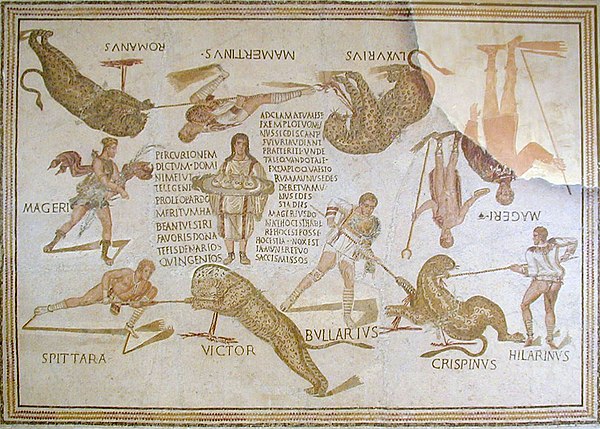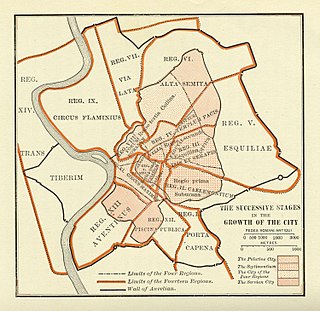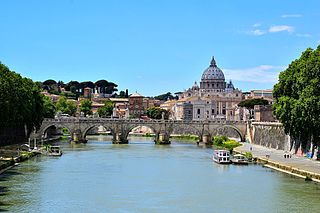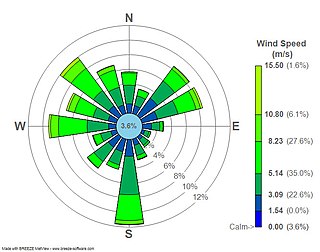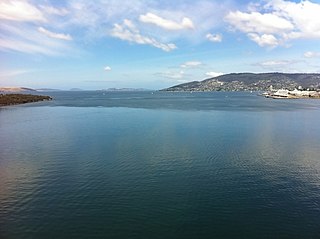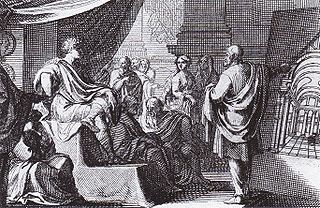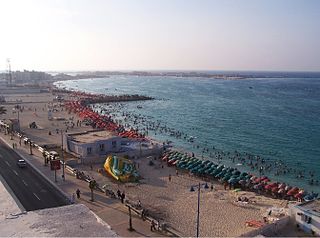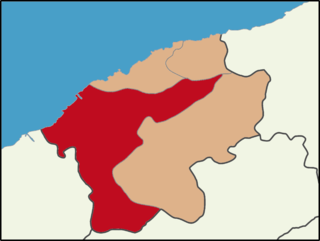The climate of Ancient Rome varied throughout the existence of that civilization. In the first half of the 1st millennium BC the climate of Italy was more humid and cool than now and the presently arid south saw more precipitation. [1] The northern regions were situated in the temperate climate zone, while the rest of Italy was in the subtropics, having a warm and mild climate. [1] During the annual melt of the mountain snow even small rivers would overflow, swamping the terrain (Tuscany and the Pontine Marshes were deemed impassable in antiquity). [1] The existence of Roman civilization (including the Eastern Roman Empire) spanned three climatological periods: Early Subatlantic (900 BC–175 AD), Mid-Subatlantic (175–750) and Late Subatlantic (since 750). [2]
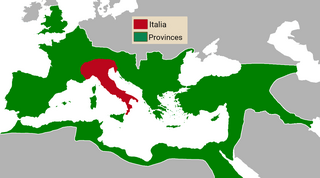
Italia was the homeland of the Romans and metropole of Rome's empire in classical antiquity. According to Roman mythology, Italy was the new home promised by Jupiter to Aeneas of Troy and his descendants, ancestors of the founders of Rome. Aside from the legendary accounts, Rome was an Italian city-state that changed its form of government from Kingdom to Republic and then grew within the context of a peninsula dominated by the Etruscans in the centre, the Greeks in the south, and the Celts in the North.

In meteorology, precipitation is any product of the condensation of atmospheric water vapor that falls under gravity. The main forms of precipitation include drizzle, rain, sleet, snow, graupel and hail. Precipitation occurs when a portion of the atmosphere becomes saturated with water vapor, so that the water condenses and "precipitates". Thus, fog and mist are not precipitation but suspensions, because the water vapor does not condense sufficiently to precipitate. Two processes, possibly acting together, can lead to air becoming saturated: cooling the air or adding water vapor to the air. Precipitation forms as smaller droplets coalesce via collision with other rain drops or ice crystals within a cloud. Short, intense periods of rain in scattered locations are called "showers."

In geography, the temperate or tepid climates of Earth occur in the middle latitudes, which span between the tropics and the polar regions of Earth. These zones generally have wider temperature ranges throughout the year and more distinct seasonal changes compared to tropical climates, where such variations are often small. They typically feature four distinct seasons, Summer the warmest, Autumn the transitioning season to Winter, the colder season, and Spring the transitioning season from winter back into summer. On the northern hemisphere the year starts with winter, transitions in the first halfyear trough spring into summer which is in mid-year, then at the second halfyear trough autumn into winter at year-end. On the southern hemisphere seasons are swapped with summer in between years and winter in mid-year.
Contents
- Stable climate
- Winds
- Precipitation
- Environmental issues and climate change
- See also
- Notes
- References
The written, archaeological and natural-scientific proxy evidence independently but consistently shows that during the period of the Roman Empire's maximum expansion and final crisis, the climate underwent changes. [3] The Empire's greatest extent under Trajan coincided with the Roman climatic optimum. [4] The climate change occurred at different rates, from apparent near stasis during the early Empire to rapid fluctuations during the late Empire. [3] Still, there is some controversy in the notion of a generally moister period in the eastern Mediterranean in c. 1 AD–600 AD due to conflicting publications. [5]

In the study of past climates ("paleoclimatology"), climate proxies are preserved physical characteristics of the past that stand in for direct meteorological measurements and enable scientists to reconstruct the climatic conditions over a longer fraction of the Earth's history. Reliable global records of climate only began in the 1880s, and proxies provide the only means for scientists to determine climatic patterns before record-keeping began.

The Roman Empire was the post-Roman Republic period of the ancient Roman civilization. An Iron Age civilization, it had a government headed by emperors and large territorial holdings around the Mediterranean Sea in Europe, North Africa, and West Asia. From the constitutional reforms of Augustus to the military anarchy of the third century, the Empire was a principate ruled from the city of Rome. The Roman Empire was then divided between a Western Roman Empire, based in Milan and later Ravenna, and an Eastern Roman Empire, based in Nicomedia and later Constantinople, and it was ruled by multiple emperors.

Trajan was Roman emperor from 98 to 117 . Officially declared by the Senate optimus princeps, Trajan is remembered as a successful soldier-emperor who presided over the greatest military expansion in Roman history, leading the empire to attain its maximum territorial extent by the time of his death. He is also known for his philanthropic rule, overseeing extensive public building programs and implementing social welfare policies, which earned him his enduring reputation as the second of the Five Good Emperors who presided over an era of peace and prosperity in the Mediterranean world.
